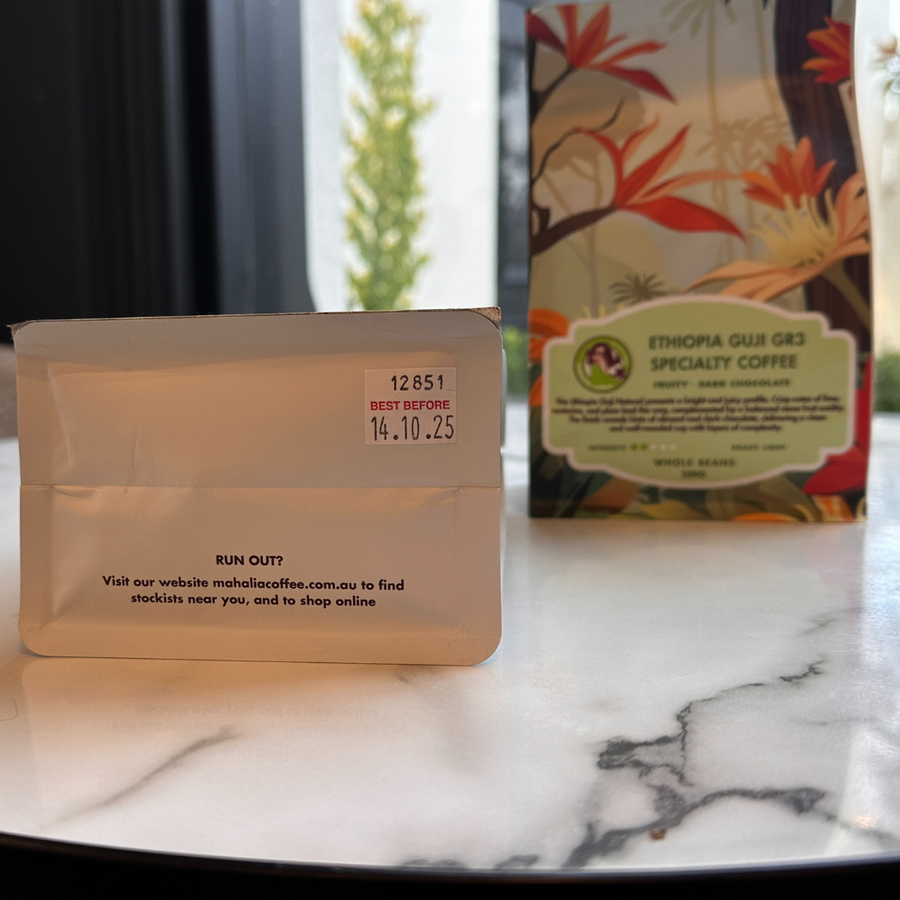
Your Coffee’s Batch Number and Best Before Date Tells a Story
Batch Number: That’s Your Link to the Roast
You’ll notice a batch number on each of our coffee bags—that’s not just a random code. It’s a direct link to your exact roast. Behind that number is a fully logged record: the roast curve, temperature profile, timing, and even the lot number of the green coffee straight from origin. We take traceability seriously because every detail matters when you’re chasing consistently great coffee.
To meet Australian Food Standards, we also include a Best Before date. But here’s a bit of inside knowledge for our fellow coffee lovers:
-
For 1kg bags, subtract 6 months from the Best Before to find the roast date.
-
For 250g bags, subtract 9 months, accept any of our Ethiopians
We like to say: drink your coffee within 4 months of roasting and you’ll still be getting that beautiful balance of flavour, aroma, and body.
Fresh vs Aged: What’s Right for You?
For pour-over and filter lovers: grab coffee roasted within the past month and brew it fresh. It’s where those nuanced florals and fruit notes truly shine.
For espresso and stovetop fans: give your coffee a little time to rest. Aged coffee (a few weeks to a couple of months post-roast) tends to bring out deeper body, rounded sweetness, and smooth out those sharper acids.
Why Storing Coffee Right Matters
You wouldn’t leave your Parmigiano out on the kitchen bench or throw onions in the fridge. Just like with other pantry favourites, coffee has its own rules for keeping it fresh.
Here’s the thing: coffee won’t make you sick if it’s old, but it will lose what makes it so special—flavour, fragrance, and complexity. Coffee is a food product, and like all foods, oxygen is its enemy. It slowly breaks down the vibrant flavours and delicate aromatics we work so hard to develop in the roast.
That’s why proper storage is key. Keep your coffee in a cool, dark place, sealed tight. Store it like you care—and it’ll taste like you do.
